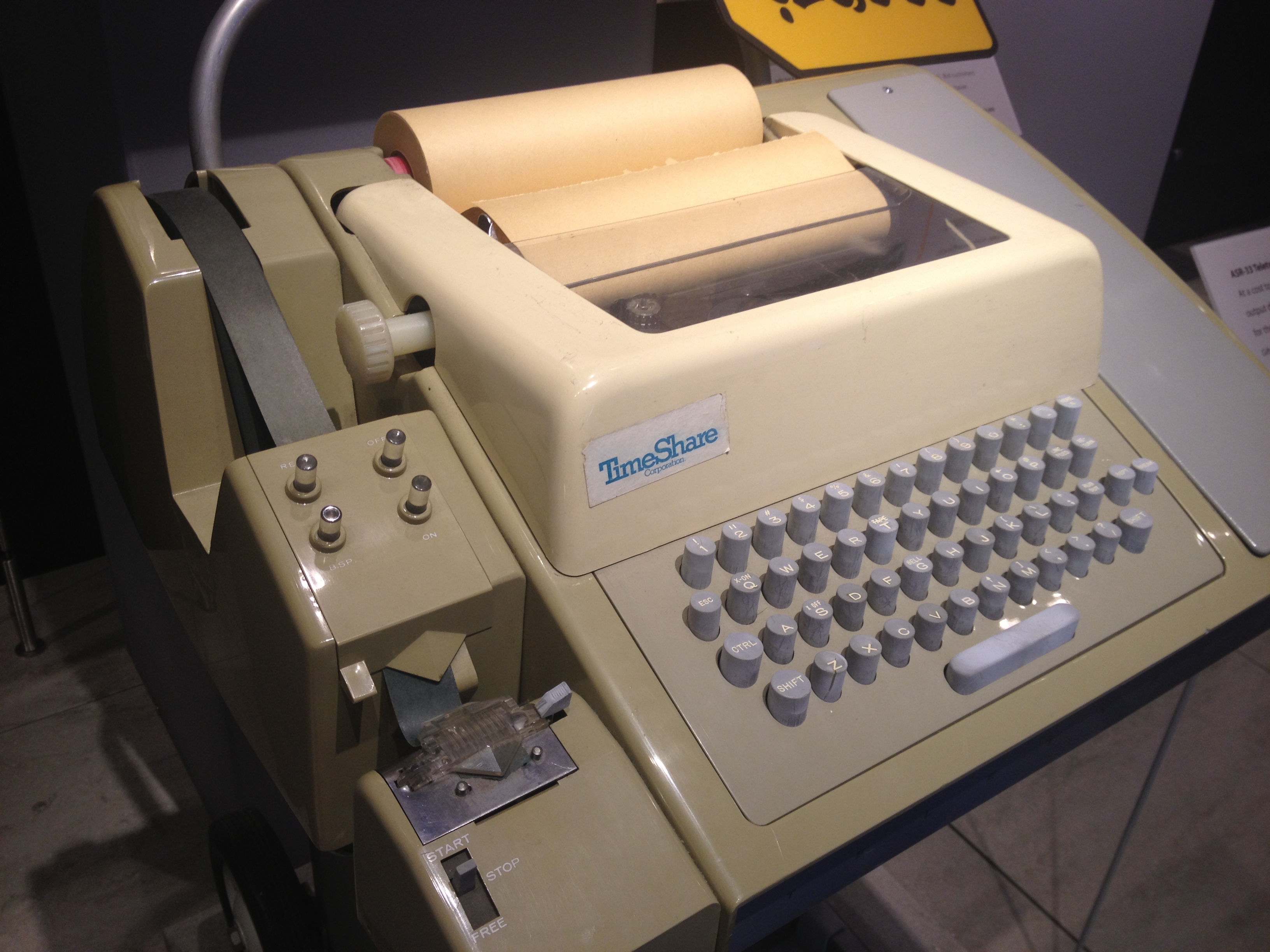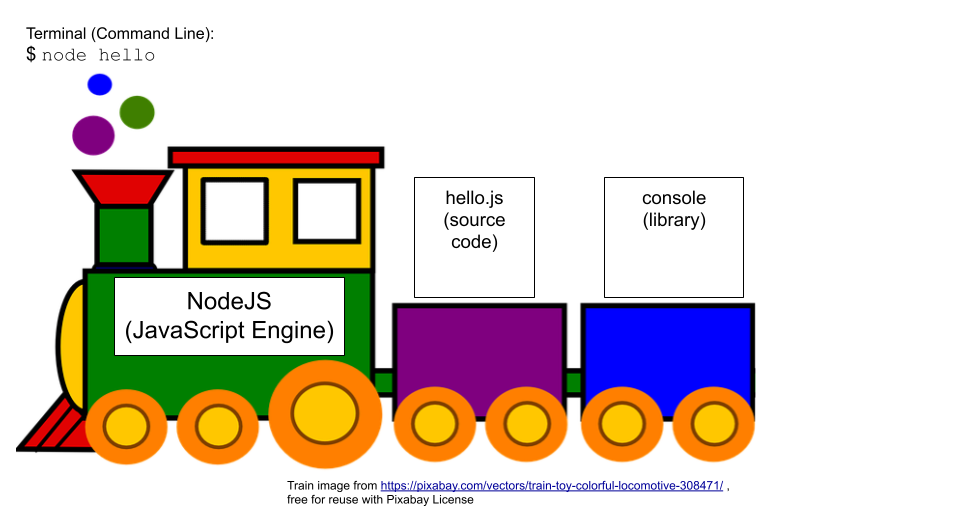Historical Terminal
Computers used to not have screens! They were connected to devices like this:

The Terminal app is a direct descendant of a TeleType printer or TTY.
When you type into the console and hit Enter you are pretending to type a line onto a TTY; the scrolling terminal is like a roll of printer paper.
See this twitter thread for more history and TTY pix.
picture of Teletype Corporation ASR-33 on display at the Computer History Museum by ArnoldReinhold [CC BY-SA 3.0] via Wikimedia
Node is a JavaScript Engine

An "engine" is a type of program that either executes or empowers other programs.
NodeJS (aka node) is an engine that runs JavaScript programs -- either from files, or interactively from the command line.
A Tale of Two Prompts
WARNING: Before you start typing, look at the prompt!
-
the shell is the command line that the terminal starts with
- its prompt usually looks like this:
-
Davids-Macbook-Pro:~ David$ (Mac)
-
david@davidspc:~$ (Ubuntu Linux)
-
C:\Users\david> (Windows)
-
node is a command line program that is launched from the shell
From inside node, if you want to get back to the shell...
- type Ctrl-C twice
- or type
.exit and Enter
When in doubt, try it out!
From now on, whenever you see text in the code font, try typing it into the terminal and see what happens! For example:
'pod' + 'cast'
If that doesn't print 'podcast', look at the prompt; you may be inside your shell instead of inside node.
Source File
- source code is the essence of a program
- source files are text files that contain source code
- to RUN a JavaScript program you type
node and then the name of the source file, like this:
$ node hello.js
Hello, World!
- The Recipe Metaphor
- source file ≈ recipe
- running a program ≈ cooking
LAB: Hello, World
- Make sure you are in your
code subdirectory using pwd or cd
- Open this directory in your text editor
- for VSCode, use
code . ("code dot")
- Create a file named
hello.js using the File > New menu
-
Inside this file, put the following source code:
console.log("Hello, World!");
Save the file
Switch back to the terminal (using Alt-Tab or Cmd-Tab or clicking)
(If you are using VS Code, you can click Terminal → New Terminal for the built-in terminal panel)
Run this file using node hello.js
What happens? Is this what you expected?
Command-Line Shortcuts
These work in bash:

Also:
- you can use Esc instead of Alt for the above
-
Esc-Backspace (delete previous word)
- up/down arrow (scroll through history)
-
End and Home (jump to end or beginning of line)
-
Tab for auto-completion of filenames (e.g. typing
node hTab will emit node hello.js)
(image source: Clément Chastagnol)



